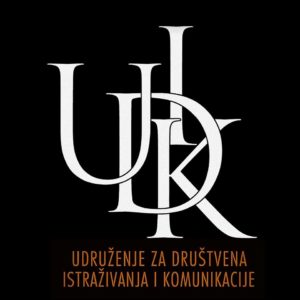 The International Day for Monuments and Sites (World Heritage Day) is held on 18 April each year around the world with different types of activities, including visits to monuments and heritage sites, conferences, round tables and newspaper articles. It was proposed by the International Council on Monuments and Sites (ICOMOS) and approved by the General Assembly of UNESCO. UDIK is the creator of the Central Register of Monuments (CES) which includes data on monuments devoted to the 1990s war in the territory of the former Yugoslavia. Within this database, there are over 3,500 monuments mapped in Bosnia and Herzegovina, Montenegro, Croatia and Serbia.
The International Day for Monuments and Sites (World Heritage Day) is held on 18 April each year around the world with different types of activities, including visits to monuments and heritage sites, conferences, round tables and newspaper articles. It was proposed by the International Council on Monuments and Sites (ICOMOS) and approved by the General Assembly of UNESCO. UDIK is the creator of the Central Register of Monuments (CES) which includes data on monuments devoted to the 1990s war in the territory of the former Yugoslavia. Within this database, there are over 3,500 monuments mapped in Bosnia and Herzegovina, Montenegro, Croatia and Serbia.
According to this register, more than 2,100 monuments devoted to civilians and fighters killed during the Bosnian war were built in Bosnia and Herzegovina. Most monuments in the Federation were built in the Tuzla Canton (288), the Sarajevo Canton (270), the Zenica – Doboj Canton (238) and the Una – Sana Canton (228). In the Republika Srpska, the higher number of mapped monuments is in the region of Bijeljina, including a subregion Zvornik (231).
According to the CES, more than 1,200 monuments dedicated to civilians and fighters killed during the Homeland War (1991 – 1995) were built in Croatia. The highest number of monuments have Vukovar – Srijem County (109) and Sisak – Moslavina County (100).
On the other hand, in Montenegro and Serbia there is a much lower number of monuments and are mostly devoted to the sufferings in the NATO bombing and the Kosovo war. Thus, 17 monuments were mapped in Montenegro, and in Serbia a total of 301 monuments. Most of the monuments were mapped in the area of Belgrade (52) and Pčinja District (30).
On the basis of the analysis of the collected material, UDIK Coordinator Edvin Kanka Ćudić said: “The most common forms of memorials in these countries are memorial plaques (both big and small-sized). Besides the plaques, there are other installations such as memorial complexes, fountains, crosses, memorial rooms, sculptures, cemeteries, churches etc. Memorial plaques are usually attached to the wall, but a large number of them are also placed on the ground.”
UDIK research has found that in Bosnia and Herzegovina, but also in the region, there are a large number of controversial monuments that cause intolerance and conflict in the community. These are often monuments dedicated to foreign fighters who fought during the war against Bosnia and Herzegovina, such as a monument dedicated to the mujahedins (Zavidovići), or a memorial to Russian volunteers killed during the Bosnian war (Višegrad). In Prijedor there is a monument dedicated to Jovan Rašković. In Trnopolje, where was a war camp for non-Serbs, there is a memorial dedicated to the fallen members of the Army of Republika Srpska.
„Bosnia and Herzegovina is a land of monuments in which, simultaneously, the war of the monuments is led by three conflicted war narratives. For this reason, it is important to ask whether these monuments are necessary for the best memory of the Bosnian war victims. Although most survivors and observers agreed that monuments should be built in places of mass crimes, there is no common view on what their purpose should be”, said Ćudić.
Early this year UDIK published a book called Paths of Remembrance. The team that worked on the selection and photographing of monuments passed the route Sarajevo – Brčko via Kladanj and back via Gračanica and Doboj. The route of about 400 kilometers covered several towns and municipalities, and as a result, the material was presented in a catalog of photographs of the monuments, which best illustrates the examples of dealing with the past in Bosnia and Herzegovina.
 UDIK Udruženje za društvena istraživanja i komunikacije
UDIK Udruženje za društvena istraživanja i komunikacije

